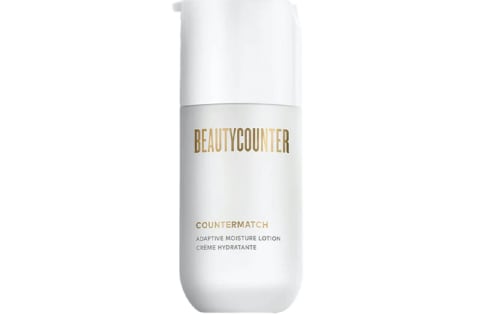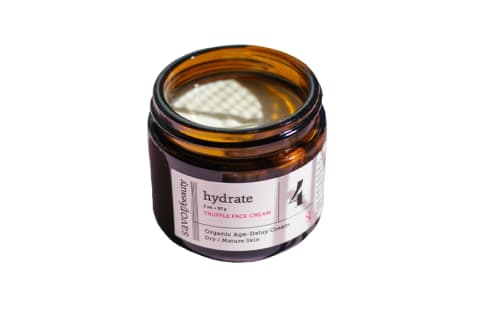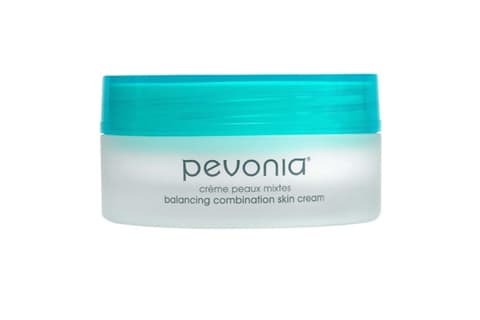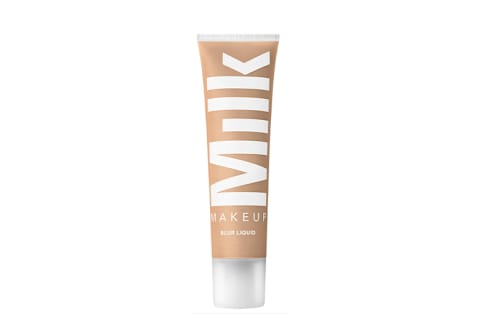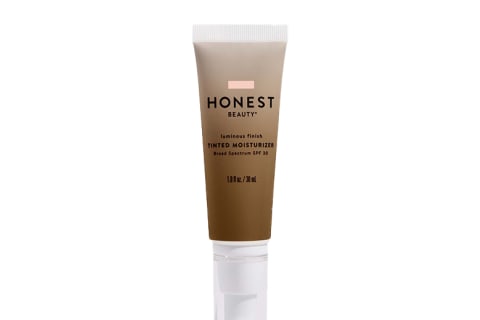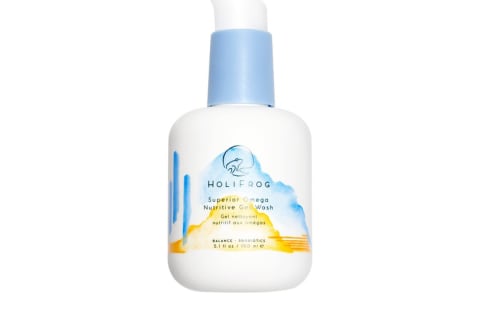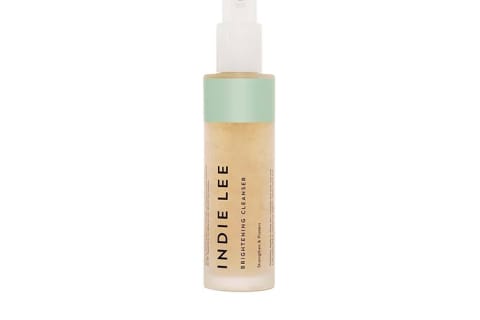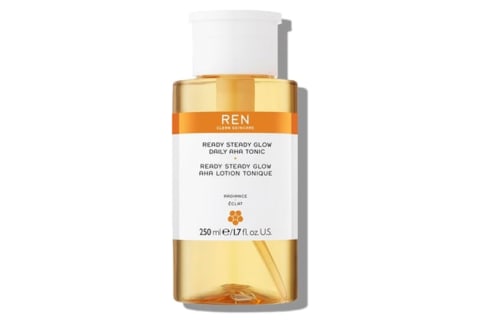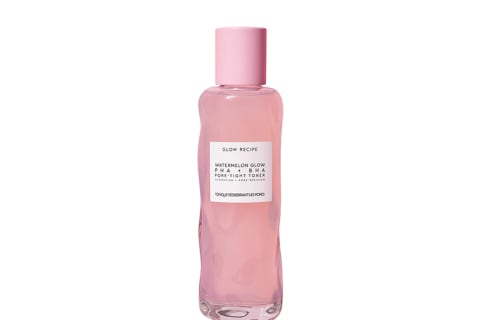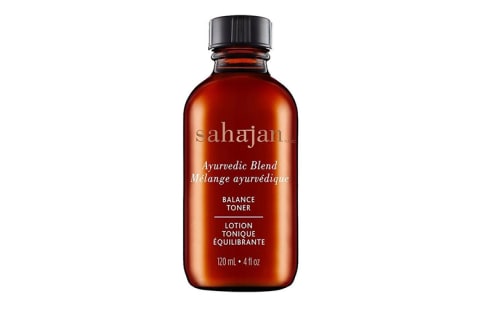Combination Skin: 5 Signs You Have It + How To Care For It, From Experts


Discovering your skin type is, arguably, the cornerstone of skin care. After all, you can't begin to approach targeted treatments without knowing what kinds of formulas work best for your skin.
And while a lucky few can identify their skin type right off the bat—be it dry, oily, or acne-prone—most of the time it's not so obvious. Case in point: combination skin. As its title suggests, combination skin is more of a skin type hybrid, and it's not so easy to point out.
Think you might have combination skin? We tapped the experts for the most common signposts of this skin type, plus which products you should use to keep your combination skin glowing.
What is combination skin?
"Combination skin is part oily, part dry," says board-certified dermatologist Jeanine Downie, M.D. "Typically, it's oily in the T-zone and drier on the cheeks."
So while you may notice patches of shine on your face, that doesn't necessarily mean you have run-of-the-mill oily skin. Rather, oily skin refers to shine all over: "When you have oily skin, it is something you will notice all over your face, as opposed to just one restricted area," celebrity esthetician and dermatological nurse Natalie Aguilar adds.
What causes combination skin?
In terms of what causes combination skin, you can thank those familiar factors for any skin type—age, hormone fluctuations, and genetics (i.e., some people are just born with larger pores around the T-zone). Environment also plays a role, as drier weather can zap certain areas of moisture, while humid temperatures can increase sweat and oil on the T-zone.
How to tell if you have combination skin.
Combination skin is quite common, and yet it's likely the most difficult to identify. While your skin can certainly fluctuate depending on your environment and lifestyle, there are some quintessential signs you're dealing with combination skin. Here, five ways to tell:
- Notice where you shine: As mentioned, individuals with combination skin tend to be more oily in the T-zone and drier along the perimeter of the face.
- Check the weather: "Combination skin tends to become more noticeable during certain times of year with more extreme temperatures, like summer or winter," says celebrity esthetician Lisa Guidi, owner of Erase Spa. "You'll notice that certain areas of skin are more dry while other areas simultaneously are more oily."
- Use the sunblock test: According to Downie, you can tell whether you have combination skin simply by slathering on sunscreen. Apply your product, then notice where your face shines up—if your cheeks absorb the sunscreen but your forehead and nose look a bit greasy, you likely have combination skin, says Downie. Again, it refers to where you produce the most oil, but if it's hard for you to tell on a bare face, the sunscreen can help you notice some slick.
- Map your acne: People with combination skin tend to be more acne-prone along the T-zone, where there's more oil production. So, if a cluster of breakouts tends to crop up around your forehead, nose, and chin, you may have combination skin.
- Take our skin type quiz! If you're still unsure, take a peek at this skin type quiz to help you narrow it down.
How to care for combination skin.
The key to caring for combination skin is treating both oily and dry areas simultaneously. You'll need clarifying products to penetrate into pores and lift the excess oil, but you don't want anything too stripping lest you dry out your skin further. It's a bit of a balancing act, and it takes layering the right ingredients. As Aguilar notes, "Dealing with combination skin is simply trying to find the right combination of products to address its specific needs." Couldn't agree more.
That said, here are some curated skin care tips for combination skin:
Gentle exfoliation is key.
No matter what products you choose—acid-containing cleansers, potent serums, pads, et al.—AHAs and BHAs are great to add to a combination skin routine, especially if you're facing some breakouts. Downie is especially partial to glycolic acid, if your skin can handle it: "It improves the texture and tone of the skin," she says. If your skin falls on the more sensitive side (yes, combination skin can also be sensitive!), you may want to stick to lactic acid, which is known for being more gentle on the skin.
Regardless, make sure you're not overdoing it with the exfoliation: "Just because some areas of your face might produce excessive oil, that doesn't make your skin 'oily,' so one must make sure not to treat combination skin with harsh overdrying skin care products," Aguilar adds.
Balance it out with soothing ingredients.
Again, it's whatever that looks like for you: Some throw a hydrating toner into the mix, while others love patting in a good niacinamide or hyaluronic acid serum. Just make sure to add in soothing, calming ingredients to balance out that exfoliation and allow the dry parts of your skin to feel equally loved. "Combination skin tends to be dehydrated," says Aguilar. "Applying soothing and hydrating skin care products is key to maintaining a healthy, balanced complexion."
Find a hydrating yet lightweight moisturizer.
People with oily areas may shy away from moisturizers, in fear of creating more shine. But as we know, dehydrated skin tends to produce even more oil, and thus adding moisture is key. That doesn't mean you have to slather on a thick cream—lightweight formulas that don't skimp on hydration are just what combination skin needs.
Application matters, too: According to Guidi, a light veil of moisture can keep your skin breathable during the day. Then at night, you can slather on the same formula in a thicker layer, as your skin needs a bigger dollop of moisture while you sleep1.
So what ingredients should you look for?
With products, you'll want a combination (had to!) of exfoliators, like glycolic and lactic acids, and skin soothers, like hyaluronic acid, colloidal oat and ceramides.
Niacinamide is also a great ingredient to watch, as it has oil-balancing capabilities without stripping the skin barrier—so it regulates sebum2 and improves hydration at the same time. In other words, a total win for combination skin.
Makeup tips.
When it comes to makeup, you'll want to use silky, cream products on drier areas and perhaps a setting powder on areas vulnerable to shine. Of course, you'll want to stick to noncomedogenic products across the board to minimize breakouts areas prone to pore-clogging.
So what does this look like in practice? Peruse the below:
- Blush: If your cheeks tend to look flaky, tap a cream blush on the apples for some subtle color. (And see here for the best way to apply depending on your face shape.)
- Primer: Generally, primers are your friends, here. As celebrity makeup artist Katey Denno once told us about applying makeup on slick skin, "It can be helpful to use a more mattifying primer, or even to gently press in a lightweight face powder over the parts of your face that are most prone to glisten." For combination skin, that's the T-zone.
- Foundation & concealer: For your complexion products, a lightweight, creamy number is best so you can layer on coverage without it looking caky. For oilier areas prone to shine, you might even want to tap some setting powder over your concealer, so it stays put all day long.
- Highlighter: Like blush, cream or liquid highlighters are top-notch for those usually drier cheeks. Bonus: Tap some product on your eyelids, too, for a gorgeous glossy lid.
Product recommendations.
Here, find our specific picks for this skin type.
Best moisturizers for combination skin.
Lightweight, yet hydrating—these are our favorite moisturizers (and find a full list here).
Shop these products:
Best foundation for combination skin.
As mentioned, you'll want to grab a creamy foundation that melts into the skin without clogging up the pores. These few will do the trick:
Shop these products:
Best face wash for combination skin.
Face wash can be tricky—you want one that deeply cleanses the skin and removes excess oil without disrupting the barrier. These picks put in the work, and you won't ever have that tight, post-wash feeling.
Shop these products:
Best toner for combination skin.
Gone are the days of highly astringent toning solutions. The toners of today are gently purifying, nourishing, and perfect for combination skin types.
Shop these products:
The takeaway.
Combination skin is just how it sounds: It's a combo of dry and oily areas on your face, with specifically more shine along the T-zone. That's why caring for combination skin is a bit of a balancing act—you'll need to find that perfect medium between penetrating pores to unclog oil and soothing the drier regions. Perhaps this goes without saying, but sunscreen is also a must-have, especially when incorporating acids into your routine. (No matter your skin type, proper sun care is a must.)
And while it ultimately takes some trial and error to discover your golden skin care routine, knowing your skin type can definitely narrow down some essential players. If you think you may fall into the combination skin camp, consider the above your starting stage.

Jamie Schneider is the Beauty Editor at mindbodygreen. She has a B.A. in Organizational Studies and English from the University of Michigan, and her work has appeared in Coveteur, The Chill Times, and more. In her role at mbg, she reports on everything from the top beauty industry trends, to the gut-skin connection and the microbiome, to the latest expert makeup hacks. She currently lives in Brooklyn, New York.
